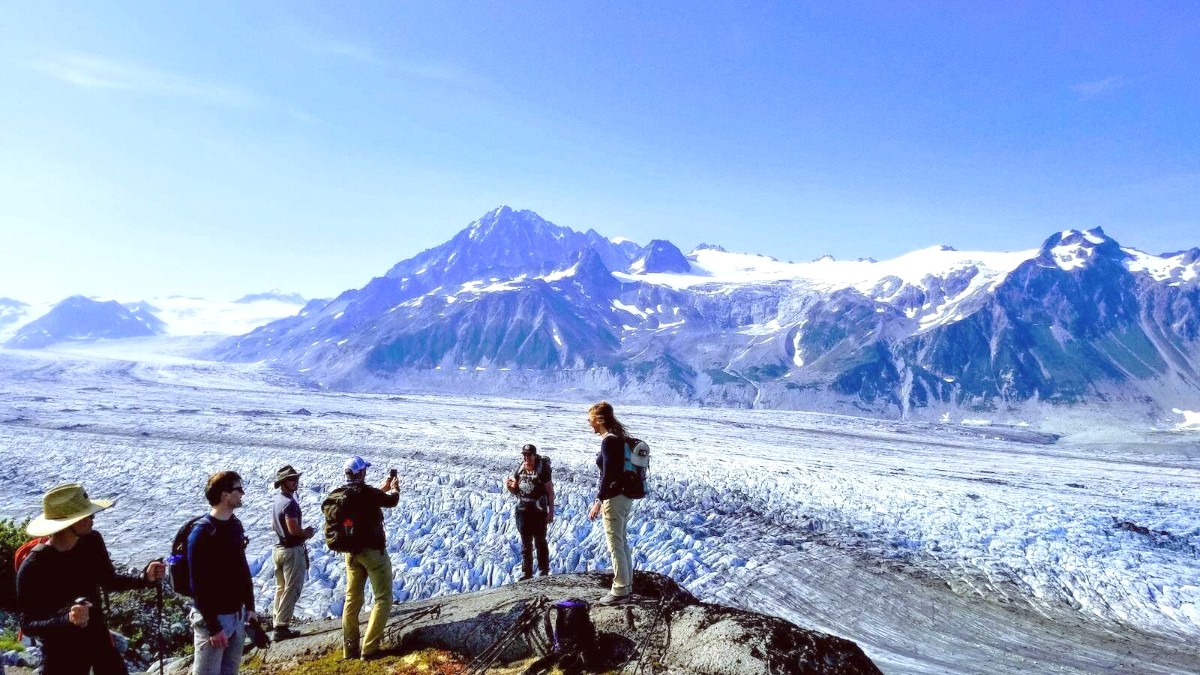
Alaska, USA
Alaska's weather changes quickly. Even in summer, evenings turn cool. Always pack layers. June: Average high temperatures 50-60°F (10-16°C). Lows 40-50°F (4-10°C). Often drier than July or August. Long days.
July: Warmest month. Average highs 60-70°F (16-21°C). Lows 45-55°F (7-13°C). More rainfall. August: Average highs 55-65°F (13-18°C). Lows 45-55°F (7-13°C). Rainfall later in August. Moderate humidity.
Prepare for Alaska's climate factors.
Extreme Temperatures: Winter temperatures drop below 0°F (-18°C). High Winds: Coastal areas and mountain passes experience strong winds. Rainfall: July and August are often the wettest. Daylight Hours: Extreme variations from 20 hours in summer to 6 in winter. Consider an Eye mask for summer nights.
Mid-May to September
Mid-May to July
Sockeye: June to early August. Silver: Late July to September.
June to September
June to August for marine life, bears, and moose.
Bear viewing tours often run from June through September.
June to September
June to early September. Access depends on snow melt.
June to August, generally calmer waters.
Entry requirements are standard for the USA. Visa Waiver Program (VWP) for citizens of 40 countries for 90 days or less. Obtain ESTA online at the official ESTA website before travel (at least 72 hours prior).
Passport valid six months beyond stay, ESTA approval or valid visa, return or onward ticket, proof of sufficient funds, digital photo for visa applications.
For all freshwater and saltwater fishing. Obtain from Alaska Department of Fish & Game or local vendors, online.
Some areas (like Katmai NP) use lottery. Tour operators handle access for Kenai tours.
Kenai Fjords NP has no entrance fee. Some federal sites may require fees or an "America the Beautiful National Parks Pass."
No general health-related entry requirements for the U.S.
Highly recommended for medical emergencies and trip changes. Consider World Nomads or SafetyWing.
Plan your budget carefully. Alaska can be expensive, especially during peak season. Prices for goods and services often reflect the cost of transport to remote locations.
Daily: $100 - $200 per person. Accommodation: Camping at state park campgrounds ($20-$40/night) or staying at a hostel or budget motel ($80-$150/night for a room). Food: Buying groceries for self-catering, eating at fast-food establishments, or visiting casual diners ($40-$70/day). Pack a cooler for drinks and snacks.
Daily: $250 - $500 per person. Accommodation: Staying in mid-range hotels, B&Bs, or cabins ($180-$350/night). These often offer more amenities and better locations. Food: A mix of self-catering from grocery stores, eating at casual restaurants, and enjoying some nicer meals ($80-$120/day). You can sample local seafood.
Prioritize your health and safety. Alaska is wild, and knowing potential risks helps you stay safe.
Use strong Insect repellent containing DEET (25-30%+) or picaridin. Wear long sleeves and pants.
Drink Bottled water or use a Water filter or purifier (like Sawyer Products MINI Water Filter) in backcountry.
Use High-SPF sunscreen, Lip balm with SPF, and Sunglasses (polarized recommended).
Keep a safe distance from all wildlife.
Bears, moose, and other large animals are common throughout the Kenai Peninsula. Carry Bear spray and understand how to use it. Make noise on trails. Store food properly in bear-resistant containers when camping to prevent attracting animals. Maintain a safe distance: a minimum of 25 yards for moose and 100 yards for bears. Never approach or feed wildlife. If you see a moose with calves, give it a wide berth.
This image features a first aid kit on a hiking trail next to a Backpack, symbolizing preparedness for outdoor adventures.
Dial 911 for all emergencies (police, fire, ambulance) throughout the United States.
Located in larger towns: Central Peninsula Hospital (Soldotna), South Peninsula Hospital (Homer), Providence Seward Medical Center (Seward).
Healthcare in the U.S. Is very expensive. Travel insurance is highly recommended. Without insurance, medical bills can be very large.
Understand potential natural risks.
Tap water in towns and established facilities is generally safe to drink. In backcountry areas, always filter, purify, or boil water from natural sources to avoid waterborne illnesses. Food hygiene standards are high in restaurants and stores throughout the Kenai Peninsula. Eat from reputable establishments.
Property crime, like vehicle break-ins, can occur, especially at trailheads or popular tourist spots. Do not leave valuables visible in your vehicle. Always lock your vehicle doors.
The Kenai Peninsula is generally very safe, with low violent crime rates. No specific neighborhoods are known for high crime rates. Exercise general travel awareness.
Travel insurance is highly recommended. Without insurance, you could face very large medical bills. Consider a policy covering adventure activities.